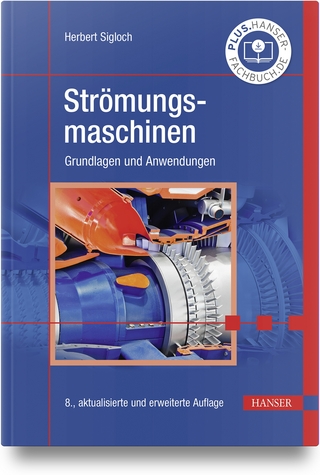
Massively Parallel Large-Eddy Simulation Solver for Internal Combustion Engines
Seiten
2021
Dr. Hut (Verlag)
978-3-8439-4740-4 (ISBN)
Dr. Hut (Verlag)
978-3-8439-4740-4 (ISBN)
- Keine Verlagsinformationen verfügbar
- Artikel merken
There is considerable interest in biofuel surrogates for gasoline and diesel due to climate impact and resource depletion of fossil-based fuels. This work discusses methods to model the direct injection of biofuels into an internal combustion engine and presents the results of numerical studies of multiple biofuels.
The chosen modeling approach is based on a hierarchical unstructured Cartesian grid-based finite volume method to solve the compressible Navier-Stokes equations coupled to a Lagrange particle tracking method used as the liquid fuel phase.
Lagrange particle-based models are presented for the different injector types, break-up, secondary break-up, collision, evaporation, and wall interaction. Moreover, several ways are shown in which the solver’s hierarchical nature can be used to speed-up the computation of particle-based methods.
Validation is then performed by comparing the large-eddy simulation results to experimental measurements for the in-cylinder flow and pressure chamber injections.
In a first numerical study, the mixing behavior of Ethanol and 2-Butanone is compared, showing the immense impact of injection timing on the mixing behavior resulting in better homogenization for Ethanol besides faster evaporation of 2-Butanone.
In a further study, a new high compression engine setup is investigated with the injection of Ethanol, Methanol, and Methyl Isopropyl Ketone, with the simulations still ongoing.
The chosen modeling approach is based on a hierarchical unstructured Cartesian grid-based finite volume method to solve the compressible Navier-Stokes equations coupled to a Lagrange particle tracking method used as the liquid fuel phase.
Lagrange particle-based models are presented for the different injector types, break-up, secondary break-up, collision, evaporation, and wall interaction. Moreover, several ways are shown in which the solver’s hierarchical nature can be used to speed-up the computation of particle-based methods.
Validation is then performed by comparing the large-eddy simulation results to experimental measurements for the in-cylinder flow and pressure chamber injections.
In a first numerical study, the mixing behavior of Ethanol and 2-Butanone is compared, showing the immense impact of injection timing on the mixing behavior resulting in better homogenization for Ethanol besides faster evaporation of 2-Butanone.
In a further study, a new high compression engine setup is investigated with the injection of Ethanol, Methanol, and Methyl Isopropyl Ketone, with the simulations still ongoing.
| Erscheinungsdatum | 06.04.2021 |
|---|---|
| Reihe/Serie | Strömungsmechanik |
| Verlagsort | München |
| Sprache | englisch |
| Maße | 148 x 210 mm |
| Gewicht | 198 g |
| Themenwelt | Naturwissenschaften ► Physik / Astronomie ► Strömungsmechanik |
| Technik | |
| Schlagworte | Biotreibstoffe • Mehrphasensimulation • Verbrennungsmotoren |
| ISBN-10 | 3-8439-4740-6 / 3843947406 |
| ISBN-13 | 978-3-8439-4740-4 / 9783843947404 |
| Zustand | Neuware |
| Haben Sie eine Frage zum Produkt? |
Mehr entdecken
aus dem Bereich
aus dem Bereich


